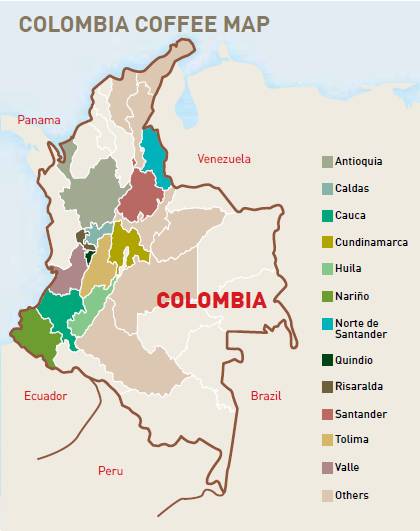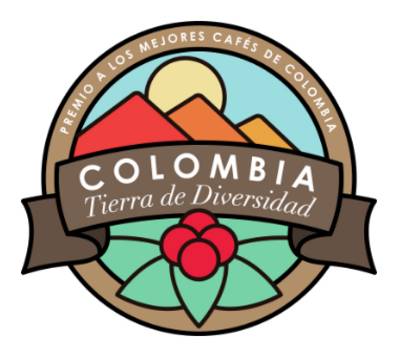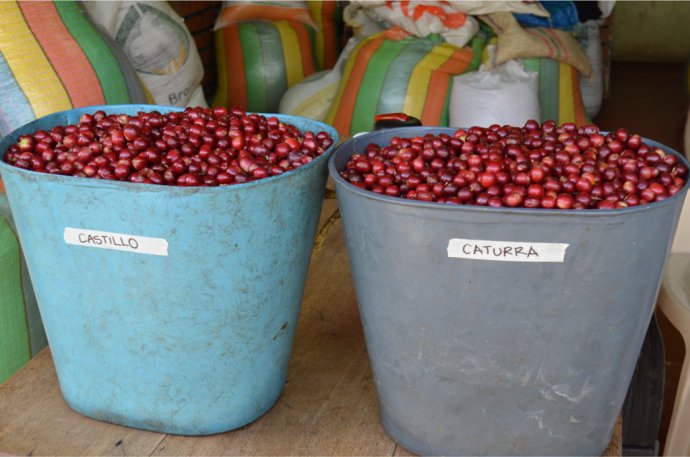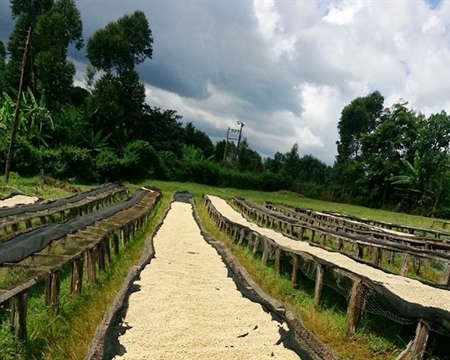About the Colombian FNC National Federation of Coffee Growers of Colombia
For professional baristas, please follow the coffee workshop (Wechat official account cafe_style)
About Columbia FNC
The biggest purpose of FNC is to be the spokesman of Colombian Coffee, promising that FNC is willing to buy as long as coffee farmers are willing to sell coffee. FNC not only works as the international ambassador of Colombian Coffee to do coffee marketing in the international market, and successfully creates the image of "Uncle Juan"; at the same time, Colombia has also invested a lot of manpower and material resources to participate in farmers' planting and production, management and continuous operation.
CENICAFE was founded in 1938, as the technical support of FNC, committed to coffee variety breeding, farmers planting production agronomic training.
About the variety
The early varieties planted in Colombia were the old iron pickup and bourbon, which were replaced by Kaddura in 1970; Kaddura is not only more productive per plant than iron pickup and bourbon, but also can be planted more per unit of acreage because the tree is more compact.
Since 1961, CENICAFE began to study Timor varieties of Robusta blood, and then selected Timor and Caturra into Columbia's Katim Catimor series. After five generations of breeding, CENICAFE released Colombia's first disease-resistant variety Colombia in 1982, and then after the emergence of leaf rust in 1983, Colombia varieties began to be planted in large quantities.
Subsequently, CENICAFE continued its research and development, releasing the second disease-resistant variety Tabi (a hybrid of iron pickup, bourbon and Timor) in 2002, and the most functional disease-resistant variety Castillo so far in 2005. After the outbreak of leaf rust in 2008, Colombia began to vigorously promote Castillo cultivation.
Implementation and support of Castillo varieties
This is a coffee reform support loan program launched in Colombia in 2012 for small farmers to grow a disease-resistant variety Castillo.
A seven-year loan scheme
At the time of final repayment, farmers only need to return 60% of the principal, and the other 40% will be borne by the government (some banks are willing to pay the bill)
You don't have to make any repayment in the first two years of the loan.
The annual interest rate is 11% at the beginning of the third year, and the farmers will repay the loan every year after the funds are collected at the end of the production season.
What do you say? Is it good or not?
Of course, whether farmers transplant Castillo is completely voluntary, the above plan is only for Castillo planting trial.
The latest news is that CENICAFE released a new disease-resistant variety CENICAFE 1 in December 2016, which is also a hybrid of Kaddura and Timor (1343). It has the same good flavor as Castillo, has a higher yield and is resistant to leaf rust and coffee beetles.
About how to deal with it
Colombian coffee is mostly washed, and every small farmer family has a small special processor (Ecomill or Eco-Pulper). The harvested coffee fruit is poured into it, which removes not only the peel and pulp, but also most of the pectin, and only a very small amount of water is needed. Next, the shell beans with a small amount of pectin will go into a small pool or container, which may be a cement pool (some tiles) or a stainless steel bucket that will ferment overnight and loosen the residual pectin. Rinse with clean water the next day, and the washing process is completed.
Dry, according to the weather, if the weather is good, of course the first choice is natural drying, there will be a small shed laid on the wooden scaffolding to dry in the shade; otherwise, it will be laid on an empty cement floor for drying; if the weather is not good, if it rains continuously, then use a dryer to dry, the dryer will have an intake temperature control, usually about 50 degrees Celsius.

About the associations and organizations of various places (DEPARTMENT)
Colombia's administrative plan is to divide the country into 32 regions (DEPARTMENT). Like our province, each region has its own capital and its own regional grower association organization for growers. 20 of those 32 regions are coffee growers. A regional association has been set up in the capital of these regions to carry out planting projects in collaboration with farmers' producers in the region. At the same time, speaking on behalf of the producers on a higher scale, some of them are listed below.
Antioquia
Caldas
Cauca
Cundinamarca
Huila
Magdalena
Norte de Santander
Quind í o
Risaralda
Santander
Tolima
Valle
About the coffee competition
There are two forms of international coffee competition in Colombia from 2005 to now.
2005-2015 Magazine Coe
Since 2016, Colombia has organized its first international coffee competition, named LAND OF DIVERSITY, and conducted its first offline auction. The new competition also has a great change compared with the competition system of CoE.
It is divided into two categories: small batches (SMALL BATCH) and large batches (LARGE BATCH). For the first time, large batches (LARGE BATCH) are included in the bidding system; small batches start at US $5 / lb and large quantities start at US $2 / lb.
The classification of coffee is evaluated by attributes, and the five attribute categories of small batches of coffee are evaluated in the tournament. Each coffee can be nominated in one or more categories and win the final championship award in this category.
The five attribute categories are sour Acidity, taste Body, balance Balance, flexibility Mildness (also known as softness on the official website), and trait processing flavor Exoticness.

Important Notice :
前街咖啡 FrontStreet Coffee has moved to new addredd:
FrontStreet Coffee Address: 315,Donghua East Road,GuangZhou
Tel:020 38364473
- Prev

Arabica coffee varieties: Castillo Castillo Introduction
Professional barista exchanges, please pay attention to coffee workshop (Weixin Official Accounts cafe_style) Coffee varieties: Castillo Castillo introduced Castillo, or castillo variety, or castillo cultivar, is a coffee variety developed by Colombia Coffee Research Institute in 2005 based on enhanced plant disease resistance. It is currently the main cultivar in Colombia. ca
- Next

General situation of Variety planting region, Harvest season and Geography in Coffee Bean producing area of Colombia
For the exchange of professional baristas, please follow the coffee workshop (Wechat official account cafe_style) about the coffee planting area and harvest season in Colombia. Columbus coffee cultivation is distributed along the Andes Mountains, from south to north, roughly divided into northern producing areas (green), central producing areas (orange, purple) and southern producing areas (yellow), in which the orange-purple area has two primary and secondary areas.
Related
- Detailed explanation of Jadeite planting Land in Panamanian Jadeite Manor introduction to the grading system of Jadeite competitive bidding, Red bid, Green bid and Rose Summer
- Story of Coffee planting in Brenka region of Costa Rica Stonehenge Manor anaerobic heavy honey treatment of flavor mouth
- What's on the barrel of Blue Mountain Coffee beans?
- Can American coffee also pull flowers? How to use hot American style to pull out a good-looking pattern?
- Can you make a cold extract with coffee beans? What is the right proportion for cold-extracted coffee formula?
- Indonesian PWN Gold Mandrine Coffee Origin Features Flavor How to Chong? Mandolin coffee is American.
- A brief introduction to the flavor characteristics of Brazilian yellow bourbon coffee beans
- What is the effect of different water quality on the flavor of cold-extracted coffee? What kind of water is best for brewing coffee?
- Why do you think of Rose Summer whenever you mention Panamanian coffee?
- Introduction to the characteristics of authentic blue mountain coffee bean producing areas? What is the CIB Coffee Authority in Jamaica?

